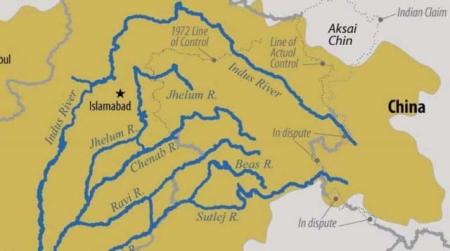10 Things about Indus water treaty that you must know
- The Indus Waters Treaty is a water-distribution treaty between India and Pakistan. It was signed in Karachi on September 19, 1960
- The Indus Waters Treaty was signed on September 19, 1960 by the then Prime Minister Jawaharlal Nehru and Pakistan's President Ayub Khan.
- It was brokered (arranged) by the World Bank (International Bank for Reconstruction and Development).
- The Indus System of Rivers comprises three western rivers — the Indus, the Jhelum and Chenab — and three eastern rivers — the Sutlej, the Beas and the Ravi.
- According to treaty, all the water of eastern rivers shall be available for unrestricted use in India. The treaty says that India can use the water in western rivers in “non-consumptive” needs (irrigation, electricity)
- Both India and Pakistan are still at loggerheads over various issues since Partition. But there has been no fight over water after the Treaty was ratified.
- A period of 10 years was permitted in which India was bound to supply water to Pakistan from its eastern rivers. This has to be done until Pakistan was able to build the canal system for utilization of waters of the western rivers.
- A Permanent Indus Commission was set up as a bilateral commission to implement and manage the Treaty. The Commission solves disputes arising over water sharing.
- Though Indus originates from Tibet, China has been kept out of the Treaty. If China decides to stop or change the flow of the river, it will affect both India and Pakistan.
- At the time of the Indus water treaty, Rann of Kutch which is in Gujarat was a disputed area between the two countries. So the area is kept out of the treaty.
In November, 2018 government approved implementation of the Shahpurkandi Dam project on the Ravi in Punjab. The move will allow India to use the water which at present goes “waste” flowing through the Madhopur Headworks downstream to Pakistan.
Most of all, the Project will be completed by 2022. Though the project was planned 17 years ago at an estimated cost of over Rs 2,285 crore, it could not be implemented due to paucity of funds with the state.






 Order Now on Amazon
Order Now on Amazon
